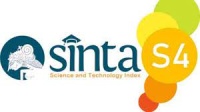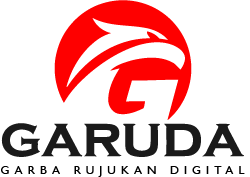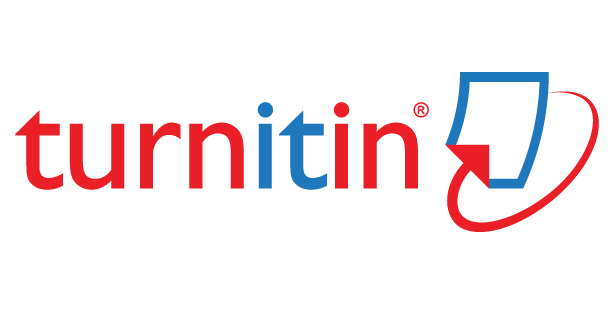Company financial performance improvement through financial literacy and intellectual capital perspective
Abstract
CV. Sarindofood is one of the companies engaged in manufacturing snacks, one of which is a type of Tost and Stick products made from raw materials for industrial corn. CV. Sarindofood uses considerable capital resources, so it needs analysis, especially in the financial sector. This study aims to determine the effect of intellectual capital on corporate financial performance, financial literacy as an understanding of finance. The independent variables used in this study are human capital, structural capital, value-added capital employed, intellectual capital (VAIC). In contrast, the dependent variables include the performance of ROA, ROI, and ROE. The data in this study are the company's financial statement data CV. Sarindofood consists of a balance sheet report and cash flow for five years from 2019 to 2018. The method used in this study uses Multiple Linear Regression, VAIC, and partial t-test, and a simultaneous F-test is used as analysis tools to see each variable's effect. The results of this study indicate that Capital Employee partially has a significant impact on financial performance. Human capital partly has a significant and positive impact on financial performance. Structural capital partially has a significant and positive effect on financial performance. Whereas the value of the results simultaneously shows that the influence of Intellectual Capital on ROA has a significant effect of 60%, Intellectual Capital on RO1 has a significant effect of 69%, and Intellectual Capital on ROE has a significant effect of 55%.
Full Text:
PDFReferences
M. Delgado. 2011. The Role of Intellectual Capital Assets on the Radicalness of Innovation : Direct and Moderating Effects. UAM- Accent. Work. Pap., pp. 1–27.
I. J. dos S. Felipe, H. B. Ceribeli, and T. Q. Lana. 2017. Investigating the level of financial literacy of university students. RACE - Rev. Adm. Contab. e Econ., vol. 16, no. 3, pp. 845–866.
R. Prabowo, M. L. Singgih, P. D. Karningsih, and E. Widodo. 2020. New product development from inactive problem perspective in indonesian SMEs to open innovation. J. Open Innov. Technol. Mark. Complex., vol. 6, no. 1.
B. Bayaraa. 2017. Financial Performance Determinants of Organizations: The Case of Mongolian Companies. J. Compet., vol. 9, no. 3, pp. 22–33.
B. Swiecka, E. Ye?ilda?, E. Özen, and S. Grima. 2020. Financial literacy: The case of Poland Sustain., vol. 12, no. 2, pp. 1–17.
T. Chiarello, C. Pletsch, A. Silva, and T. Silva. 2019. Financial Performance, Intangible Assets and Value Creation of Brazilian and Chilian Companies of Information Technology. Rev. Galega Econ., vol. 23, no. 4, pp. 73–88.
L. M. Crane. 2003. Measuring Financial Performance: A Critical Key to Managing Risk.
S. Suhartini, E. Yuliawati, N. Rahmawati, and D. A. H. Syahputra. 2018. Implementation of Lean Services in Hospitals To Improve The Efficiency of Patient Services in The Organization of Health Social Security (BPJS). IPTEK J. Proc. Ser., vol. 0, no. 6, pp. 64–71.
A. C. Valentin. 2011. Determinants of corporate financial performance, pp. 1–17.
F. B. Kaya, G. G. Sahin, and P. Gurson. 2010. Intellectual capital in organizations. Probl. Perspect. Manag., vol. 8, no. 1, pp. 153–160.
M. Y. Cheng, J. Y. Lin, T. Y. Hsiao, and T. W. Lin. 2010. Invested resource, competitive intellectual capital, and corporate performance. J. Intellect. Cap., vol. 11, no. 4, pp. 433–450.
A. Lusardi and O. S. Mitchell. 2019. The economic importance of financial literacy: Theory and evidence. J. Econ. Lit., vol. 52, no. 1, pp. 5–44.
A. I. Ferreira and L. F. Martinez. 2011. Intellectual capital: perceptions of productivity a and investment. Rev. Adm. Contemp., vol. 15, no. 2, pp. 249–260.
R. Myšková and P. Hájek. 2017. Comprehensive assessment of firm financial performance using financial ratios and linguistic analysis of annual reports. J. Int. Stud., vol. 10, no. 4, pp. 96–108.
P.-C. Michaud. 2017. The value of financial literacy and financial education for workers. IZA World Labor, no. November, pp. 1–11.
I. E. Karaa and T. D. Ku?u. 2016. Determining advanced and basic financial literacy relations and overconfidence, and informative social media association of university students in Turkey. Kuram ve Uygulamada Egit. Bilim., vol. 16, no. 6, pp. 1865–1891.
L. Nerdrum and T. Erikson. 2001. Intellectual capital: A human capital perspective. J. Intellect. Cap., vol. 2, no. 2, pp. 127–135.
P. Åhblom. 2017. The Financial Performance: A study of how financial numbers become meaningful.
K. Marcin. 2013. Intellectual Capital as a Key Factor of Socio-economic Development of Regions and Countries. Procedia Econ. Financ., vol. 6, no. 13, pp. 288–295.
Suhartini and Hastawati. C. S. 2020. Selecting the synthetic leather and outsole supplier for shoe production in small medium enterprise. AIP Conference Proceeding., vo.2217. April 2020.
DOI: https://doi.org/10.31284/j.jasmet.2021.v2i1.1468
Refbacks
- There are currently no refbacks.
Copyright (c) 2021 Moch. Kalam Mollah, Suhartini Suhartini, Gatot Basuki H M, Fatkhu Nasrudin Khamimi, Bangkit Dwi Wahyu Prabowo

This work is licensed under a Creative Commons Attribution-ShareAlike 4.0 International License.
Mailing Address: Journal of Applied Sciences, Management and Engineering Technology - ITATS Institut Teknologi Adhi Tama Surabaya Jl. Arief Rahman Hakim No.100, Surabaya 60117 email: [email protected] Website : https://ejurnal.itats.ac.id/jasmet/index

This work is licensed under a Creative Commons Attribution-ShareAlike 4.0 International License.









